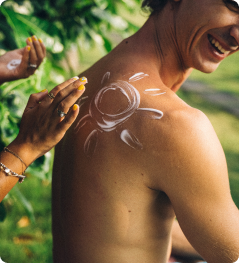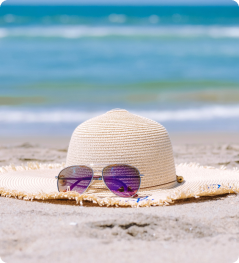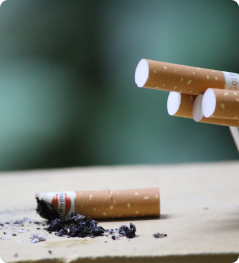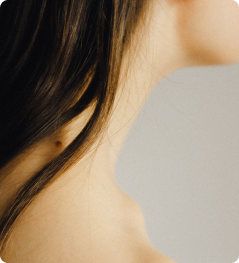Care for your skin is an essential part of caring for your body when you have lupus. Damage from the sun to your skin can trigger flares of inflammation in the entire body. Inflammation from lupus can cause rashes, oral sores and hair loss. You can reduce damage and inflammation from lupus by taking important steps to care for your skin.






How Does Sun Exposure Cause Lupus Flares?
Back to topUltraviolet rays from the sun cause damage to skin. Oxidative stress from these ultraviolet rays triggers an inflammatory response in the skin. This response increases the production of pro-inflammatory signals called cytokines that recruit an even stronger inflammatory response. This can cause inflammation of the skin with rashes, but can also provoke flares of inflammation in other areas of the body, such as increased fatigue, joint pain, and oral sores.
Ways to Avoid Sun Exposure
Back to top- Stay out of the sun from 10AM to 4PM when the sunlight is most intense
- Stay in the shade using an umbrella
- Wear a wide-brimmed hat
- Wear long-sleeved shirts and long pants.
- UV radiation can pass through clouds and glass
- UV radiation is blocked by the majority of front windshields, but the side door windows are often less protective. Factory tinting of windows does not guarantee UV protection. Continue to wear sunscreen and protective clothing in the car. Use clear, transparent UV-reducing screens on vehicle side windows.
- Do not use tanning booths
- In winter, sunlight reflection from the snow can double your UV exposure and risk for burns. Beach sand and light-colored surfaces have the same effect of amplifying UV.
Choosing the Right Sunscreen
Back to topWear broad spectrum sunscreen of SPF 30 or greater on all surfaces not covered by clothing. Broad spectrum means it protects against UVA and UVB. Reapply every 2 hours or if you sweat or swim. Also be sure the sunscreen has not expired or is less than 3 years old.
Choose sunscreen that is mineral based, not chemical based. Titanium dioxide and zinc oxide are the only sunscreen ingredients deemed to be safe and effective by the Food and Drug Administration (FDA). Mineral sunscreens also reduce your exposure to chemical ingredients. Mineral sunscreens protect your skin immediately, but chemical sunscreens can take up to 30 minutes to absorb.
One downside of mineral sunscreens is they can leave a white film on the skin. This film may have a more noticeable appearance on pigmented skin. One option to reduce this effect is to find color-tinted mineral sunscreens which better blend with skin of color. You can also mix liquid foundation into mineral based sunscreens.
Harms of Tobacco on the Skin
Back to topIf you smoke, it’s helpful to quit. Lupus rashes are more severe among people who use tobacco and smoking seems to make the treatments less effective. Avoid areas where you’d be exposed to second-hand smoke. Resources for quitting:
- Visit smokefree.gov or cdc.gov/tobacco/quit_smoking
- Call 1-800-QUIT-NOW
Skin Cancer Screening
Back to topSome medications used to treat lupus, such as methotrexate and mycophenolate mofetil, are associated with an increased risk of skin cancers over time. If you take these medications, it is particularly important to protect your skin from the sun. Ask your doctor to perform a full skin examination for cancer screening on a regular basis.
UV Index Safety Categories
Back to topSome medications used to treat lupus, such as methotrexate and mycophenolate mofetil, are associated with an increased risk of skin cancers over time. If you take these medications, it is particularly important to protect your skin from the sun. Ask your doctor to perform a full skin examination for cancer screening on a regular basis.
UV Index Safety Categories
| Exposure Category | Index Number | Sun Protection Messages |
|---|---|---|
| Low | <2 | You can safely enjoy being outside. Wear sunglasses on bright days. If you burneasily, cover up and use sunscreen SPF 30+. In winter, reflection off snow can nearly double UV strength. |
| Moderate | 3-5 | Take precautions if you will be outside, such as wearing a hat and sunglasses and using sunscreen SPF 30+. Reduce your exposure to the sun's most intense UV radiation by seeking shade during midday hours. |
| High | 6-7 | Protection against sun damage is needed. Wear a wide-brimmed hat and sunglasses, use sunscreen SPF 30+ and wear a long-sleeved shirt and pants when practical. Reduce your exposure to the sun's most intense UV radiation by seeking shade during midday hours. |
| Very High | 8-10 | Protection against sun damage is needed. If you need to be outside during midday hours between 10 a.m. and 4 p.m., take steps to reduce sun exposure. A shirt, hat and sunscreen are a must, and be sure you seek shade. Beachgoers should know that white sand and other bright surfaces reflect UV and can double UV exposure. |
| Extreme | 11+ | Protection against sun damage is needed. If you need to be outside during midday hours between 10 a.m. and 4 p.m., take steps to reduce sun exposure. A shirt, hat and sunscreen are a must, and be sure you seek shade. Beachgoers should know that white sand and other bright surfaces reflect UV and can double UV exposure. |
Many weather apps include the UV index value for your area or you can visit weather.com. Other apps:
-
Help track when UV light is most intense in your area:
-
Remind you when to reapply sunscreen:




